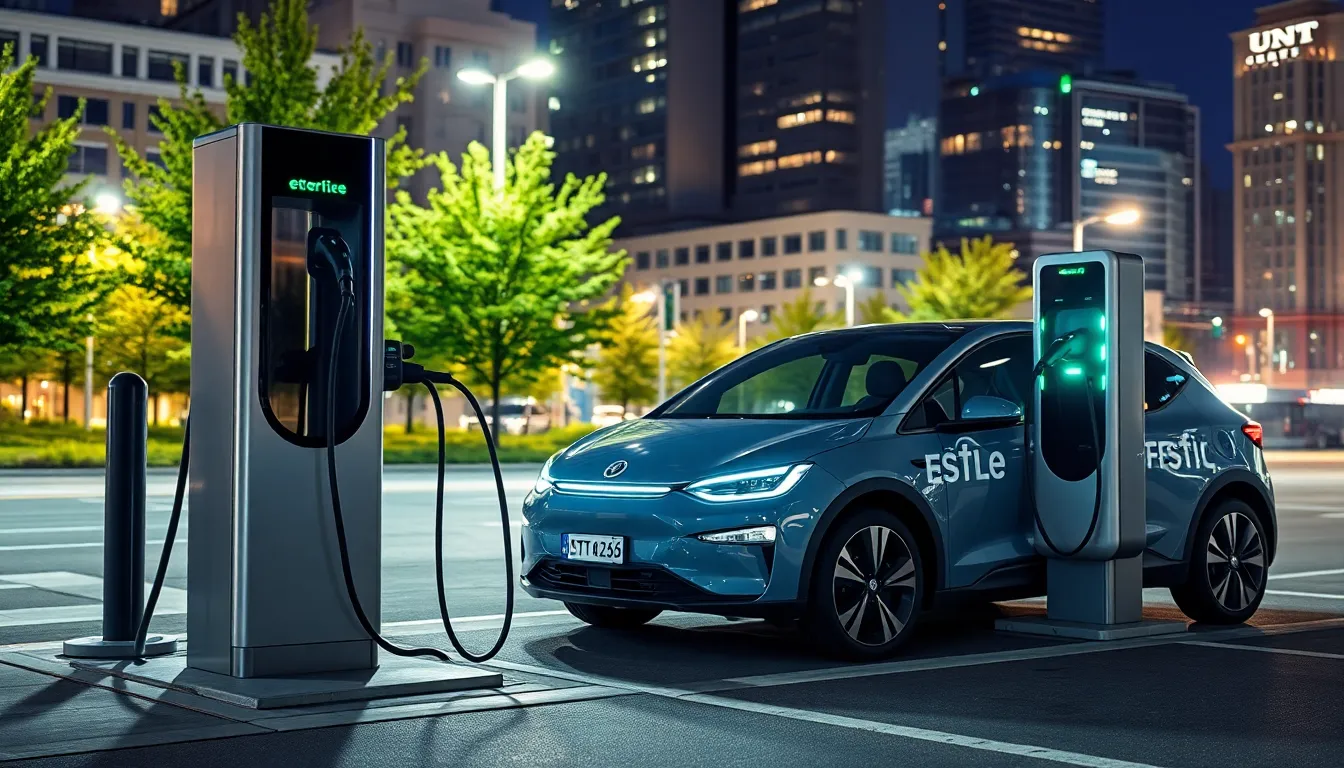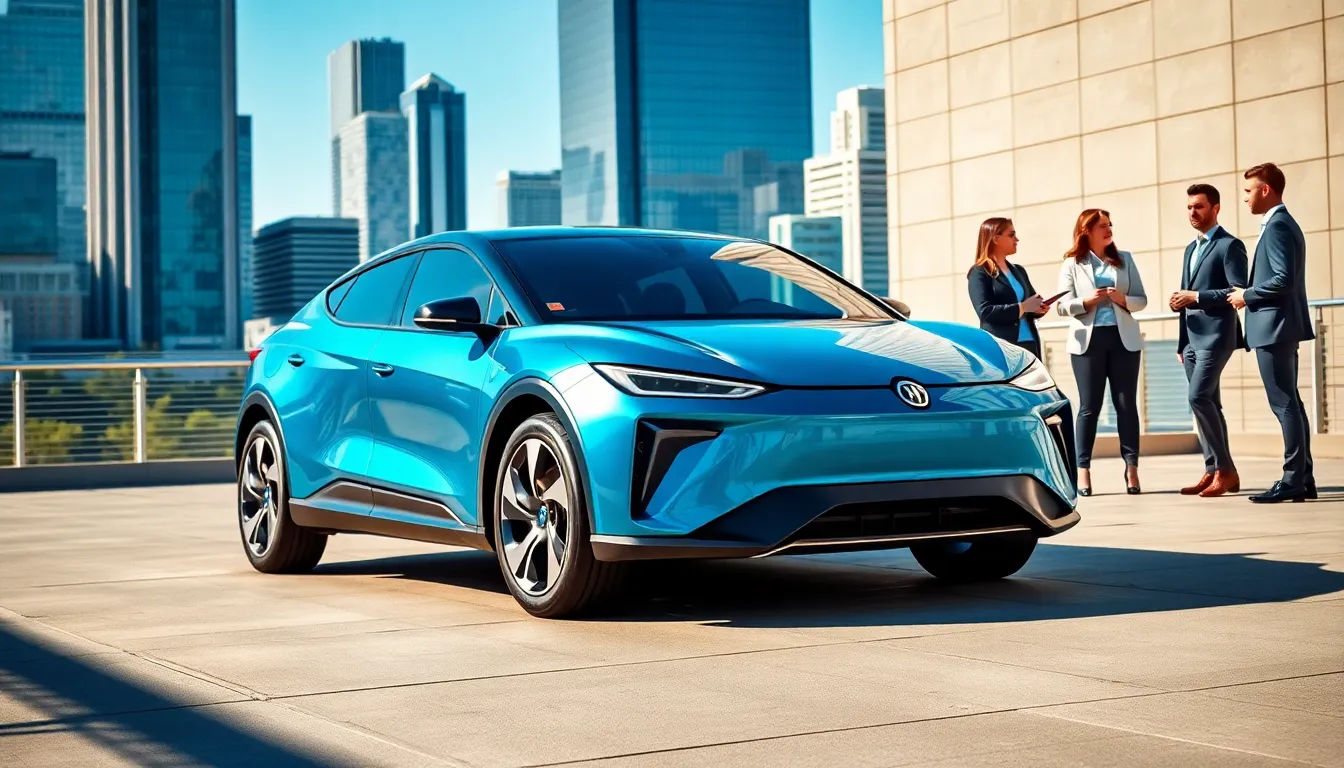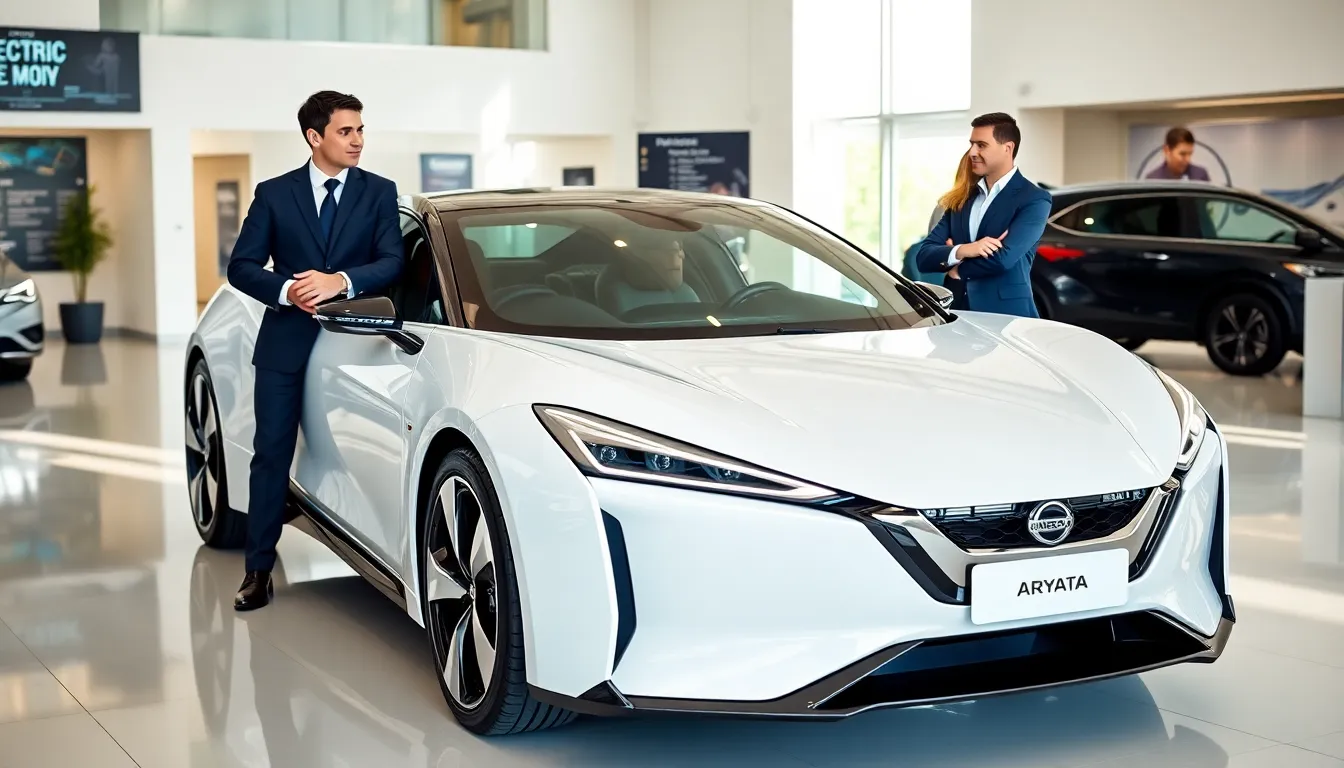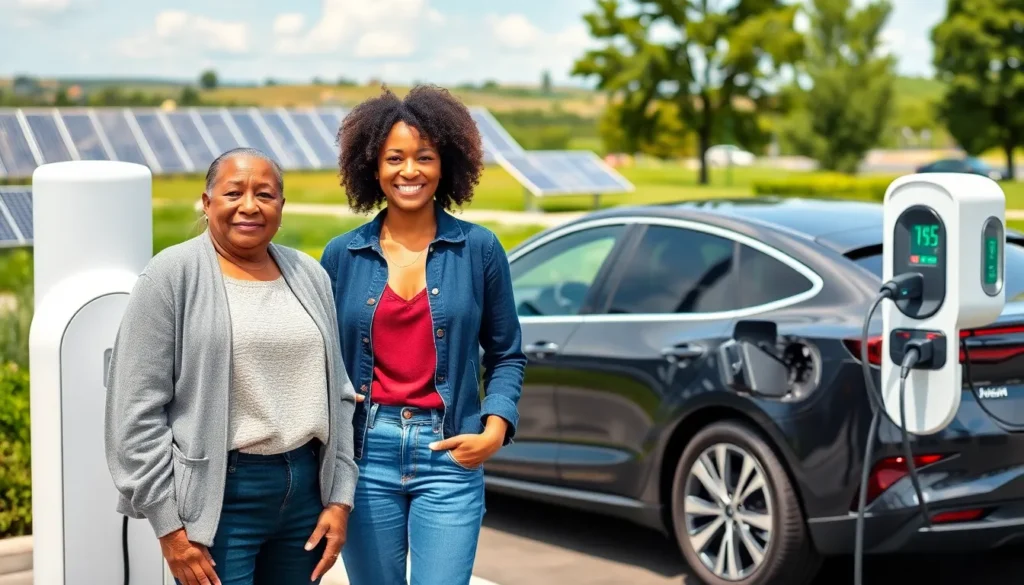Table of Contents
ToggleAs electric vehicles (EVs) gain popularity, the need for efficient charging solutions becomes increasingly critical. EV charging automation is revolutionizing the way drivers power up their vehicles, making the process faster and more convenient. With advancements in technology, automated systems streamline the charging experience, reducing wait times and enhancing accessibility.
This shift not only benefits individual drivers but also supports the broader goal of sustainable transportation. By integrating smart technology and automation, charging stations can optimize energy usage and improve grid stability. As cities and communities embrace these innovations, the future of EV charging looks brighter than ever, paving the way for a cleaner and more efficient world.
Overview of EV Charging Automation
EV charging automation streamlines the charging process by leveraging technology to enhance efficiency and user experience. Automated systems facilitate real-time communication between electric vehicles, charging stations, and energy grids. These systems optimize charging schedules based on demand, energy costs, and grid conditions.
Smart charging stations incorporate features such as load balancing and demand response, ensuring efficient energy distribution. Load balancing distributes energy evenly among multiple vehicles, preventing overload and improving grid reliability. Demand response adjusts charging rates based on electricity availability and pricing, minimizing costs for users.
Remote monitoring and management platforms allow stakeholders to track performance and diagnose issues. Operators can identify equipment malfunctions and address maintenance needs promptly, reducing downtime. Analytics also enable data-driven decisions to enhance the charging infrastructure and adapt to user behaviors.
The implementation of EV charging automation promotes sustainability by integrating renewable energy sources. Automated systems can prioritize charging during times of high renewable output, contributing to greener energy consumption.
EV charging automation transforms the charging landscape, making it more efficient, sustainable, and user-friendly. Through advanced technology, it supports the transition to a more sustainable transportation ecosystem.
Benefits of EV Charging Automation

EV charging automation offers significant advantages that enhance the overall charging experience for users and the broader energy ecosystem. Key benefits include increased efficiency and cost savings.
Increased Efficiency
Automated systems streamline the charging process. Real-time communication between electric vehicles, charging stations, and energy grids ensures optimal energy distribution. Load balancing minimizes congestion at charging stations and maintains grid stability. Demand response mechanisms adjust charging based on current energy availability, promoting faster charging times while avoiding overloaded systems. Users enjoy a hassle-free experience with automated scheduling and notifications that inform them of charging status and completion.
Cost Savings
EV charging automation leads to substantial cost reductions for users. By optimizing charging schedules based on energy demand and pricing, automated systems can significantly lower electricity expenses. Users who charge during off-peak hours take advantage of lower rates, reducing overall energy costs. Additionally, remote monitoring and maintenance reduce operational costs for charging station operators, ensuring sustained efficiency and reliability without the burden of frequent manual checks. These savings contribute to the viability and attractiveness of EV adoption, making electric vehicles more accessible to a broader audience.
Key Technologies Behind EV Charging Automation
Automated technologies enable efficient EV charging solutions, transforming the charging experience through smart systems and renewable energy integration.
Smart Charging Solutions
Smart charging solutions utilize advanced software algorithms to enhance the interaction between electric vehicles and charging stations. These solutions enable real-time communication that facilitates dynamic load management, optimizing when and how vehicles are charged. Automated systems assess factors like electricity demand, availability of energy sources, and current pricing to determine the ideal charging times. Features like demand response and load balancing minimize peak demand impacts on the grid, ultimately lowering operational costs. Stations equipped with smart technology can adjust power distribution dynamically, ensuring that multiple vehicles charge simultaneously without overloading the infrastructure.
Integration with Renewable Energy
The integration of renewable energy sources into EV charging automation supports sustainability and efficiency. Charging systems can prioritize energy sourced from wind or solar during peak production times, reducing reliance on fossil fuels. Automated platforms monitor energy availability and adjust charging schedules accordingly. For example, EVs can charge during solar peak hours to take advantage of lower costs and greener energy. This strategy not only amplifies the environmental benefits of electric vehicles but also stabilizes energy demand on the grid, promoting a more resilient energy infrastructure. Charged vehicles may also serve as temporary energy storage, discharging electricity back to the grid during peak demand, further enhancing system efficiency.
Challenges in EV Charging Automation
Numerous challenges hinder the full realization of EV charging automation potential. Addressing these obstacles is crucial for facilitating widespread adoption.
Infrastructure Limitations
Infrastructure limitations pose significant challenges to EV charging automation. Insufficient charging stations exist in many areas, limiting access for EV owners. According to the U.S. Department of Energy, there are only about 140,000 public charging stations available nationwide, often exhibiting uneven distribution. Many regions lack critical infrastructure, which leads to range anxiety among potential users.
Additionally, existing electrical grids frequently lack the capacity to support widespread charging demands. Overloaded systems can experience failures, impeding efficient energy distribution. Upgrading grid infrastructure is crucial to accommodate the increased energy needs associated with an expanding EV market.
Regulatory Hurdles
Regulatory hurdles also complicate EV charging automation efforts. Varied regulations across states and municipalities can create inconsistencies in charging station deployment. Different permitting processes, connectivity standards, and utility policies often slow the rollout of charging infrastructure.
Moreover, a lack of standardized protocols for communication between EVs and charging stations limits interoperability among different systems. Without uniform regulations, manufacturers and operators often struggle to create compatible technologies, further exacerbating challenges in achieving seamless EV charging automation. Navigating these regulatory landscapes remains vital for enhancing the efficiency and accessibility of electric vehicle charging networks.
The Future of EV Charging Automation
The future of EV charging automation looks promising as technology continues to evolve. Innovations in charging infrastructure will drive advancements, enhancing user experiences and increasing adoption rates. Automated charging systems will increasingly integrate artificial intelligence, leading to smarter, more responsive solutions that cater to individual needs.
The expansion of vehicle-to-grid (V2G) technology will enable electric vehicles to not only draw energy but also return it to the grid during peak demand. This dual functionality optimizes energy usage and contributes to grid stability, making it a crucial element of future energy management strategies.
In addition, advancements in wireless charging technology may eliminate the need for physical plug-in connections. Inductive charging pads placed in strategic locations will facilitate seamless power transfer, further enhancing convenience for EV users. The implementation of such systems will promote broader adoption by reducing the friction associated with traditional charging methods.
As smart grids evolve, they will incorporate real-time data analytics and machine learning to optimize energy distribution. Dynamic pricing models will encourage users to charge during low-demand periods, resulting in cost savings while reducing stress on electrical infrastructure.
Public-private partnerships will likely play a significant role in expanding charging networks. Collaborative efforts between governments and private enterprises can drive investments in charging stations, increasing availability and addressing range anxiety. Data sharing among stakeholders will enhance the overall efficiency of charging infrastructures.
Environmental policies and incentives will further accelerate the transition to EV charging automation. Increased support for renewable energy adoption will align with the goals of reducing carbon emissions. By integrating automated systems with green energy sources, charging operations will diminish reliance on fossil fuels while promoting sustainable practices.
Emerging technologies in energy storage, such as advanced battery systems and supercapacitors, will enhance EV charging automation. These technologies will facilitate faster charging times, reducing wait periods for users. Combining energy storage with renewable sources will enable effective charging strategies during various conditions, promoting continuous energy accessibility.
The successful implementation of EV charging automation relies on addressing current challenges and fostering a collaborative ecosystem among stakeholders. Efforts toward standardizing protocols and regulations will enhance interoperability, expanding the reach of charging networks. Continuous investment in infrastructure and technology will ensure a resilient and efficient system for the future of electric vehicle charging.
EV charging automation is reshaping the landscape of electric vehicle charging. By leveraging smart technology, it enhances efficiency and convenience for users while promoting sustainability. As innovations continue to emerge, the integration of AI and dynamic pricing models will further optimize energy distribution and user experiences.
Addressing existing infrastructure challenges and regulatory hurdles will be crucial for widespread adoption. The collaborative efforts of stakeholders can drive the development of a robust charging network that meets growing demands. As the future unfolds, EV charging automation stands poised to play a pivotal role in advancing sustainable transportation and energy management.







